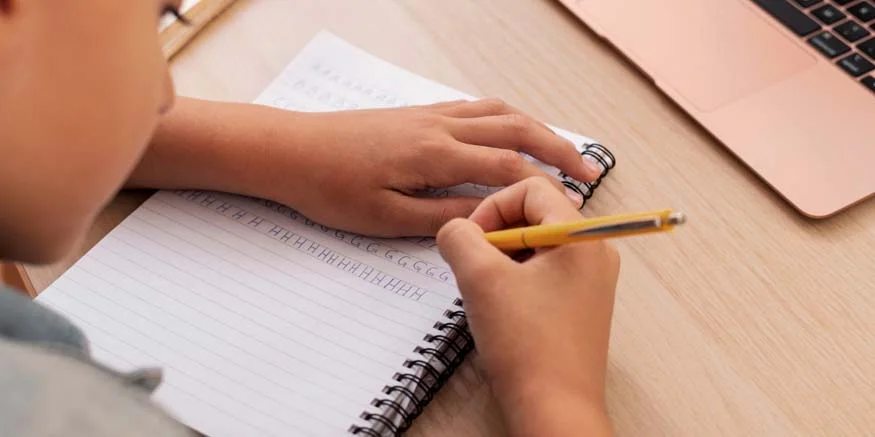Engaging kindergartners in educational activities that effectively combine learning with play is essential for their cognitive and motor skill development. Spin and write activities are interactive games designed to stimulate young minds while enhancing their writing, language, and fine motor skills. This blog delves into the concept of Spin and Write activities, their benefits, implementation strategies, and impact on early literacy development for kindergarten kids.
Understanding Spin and Write Activities
Spin and Write activities are educational games where children use a spinner to determine which letter, word, or concept they will focus on and subsequently practice writing. The spinner introduces an element of chance that adds excitement and unpredictability, captivating the children’s attention.
Each segment of the spinner corresponds to a different task, like writing a particular letter, or word, or constructing a sentence with a given word. Once the task is set, the child proceeds to write the item on a worksheet or writing surface, practising their handwriting and reinforcing their literacy skills.
Read more: Name Writing Activities for Preschoolers And It’s Benefits
Types of spin and write activities for kindergarten
Given below are assorted spin and write activities appropriate for kindergarten children
- Alphabet Spin and Write
- Sight Word Spin and Write
- Story Starters Spin and Write
- Shape Spin and Write
- Colour Spin and Write
- Number Spin and Write
This game involves a spinning wheel sectioned off with letters of the alphabet. Children spin the wheel and write down the letter it lands on, often accompanied by a corresponding word that begins with that letter, such as ‘A’ for ‘apple’. This helps increase their understanding of the alphabet and their vocabulary.
This activity assists kindergartners in recognizing and writing high-frequency words. The spinner for this activity has various commonly used words, and students must write the word it stops on. Reinforcing sight word knowledge this way aids in improving children’s reading fluency.
This is a creative activity where the spin determines the beginning of a story, a character, or a setting that the child then writes about. For example, if a student lands on “A Day at the Beach,” they would write a sentence or two describing what they imagine that scenario entails. This enhances their creative writing and storytelling abilities.
The spinner displays various shapes, like circles, squares, or triangles, and students must identify and trace the shape they land on. This helps with their handwriting and understanding of geometry.
A simple yet effective activity helps to familiarise children with different colours. The spinner board consists of colour sections, and students spin the pointer, identify the colour, and either write the colour word or draw an object in that colour.
This activity helps kindergartners develop their numeral recognition and count. This involves a spinner with numbers on it; after spinning, children write the number and perhaps draw that many objects to demonstrate quantity understanding.
Read more: 15 Benefits of Writing for Students
Benefits of Spin and Write Activities
The incorporation of Spin and Write activities for kindergarten offers numerous benefits:
- Enhanced Engagement: The game-like aspect of Spin and Write activities makes learning more enjoyable and maintains the child’s interest in the task at hand.
- Multisensory Learning: These activities cater to different learning styles as they involve visual (seeing the spinner and letters), auditory (hearing and saying the letter sounds), and kinaesthetic (spinning and writing) modalities.
- Reinforcement of Literacy Skills: Regular practice with these activities reinforces alphabet knowledge, sight word recognition, and writing skills.
- Fine Motor Development: Manipulating the spinner and the act of writing supports the development of fine motor skills crucial for writing proficiency.
- Differentiation: Spin and Write activities can be easily adapted to cater to various skill levels within a kindergarten classroom, allowing individualized learning.
Implementing Spin and Write Activities
To implement Spin and Write activities in a kindergarten classroom, educators should follow several key steps to ensure effectiveness:
- Preparing the Materials: Create a durable spinner using cardboard, brads, and a spinner arrow. Divide the spinner into sections, each representing a letter or word to be practised.
- Structured Instructions: Provide clear instructions and demonstrations to guide children on how to use the spinner and complete the writing tasks.
- Scaffolding: Start with easier tasks such as single letters and gradually progress to more complex tasks like writing words or sentences.
- Monitoring and Support: Offer assistance and encouragement as the children engage in the activities, ensuring they have the support required to succeed.
- Encouraging Independence: As children become more comfortable with the activity, encourage them to work independently, which fosters self-reliance and confidence in their literacy capabilities.
Also Read: What is Educational Psychology? Importance and Activities
Potential Impact on Literary Skills Development
- Alphabet Knowledge: Repeated exposure to letters on the spinner and practice writing them boosts letter recognition and understanding.
- Phonemic Awareness: Associating letters with sounds during the activities strengthens phonemic awareness, a key predictor of reading success.
- Writing Skills: Consistent writing practice during these activities promotes handwriting fluency and accuracy.
- Vocabulary skills: Exposure to new words and concepts on the spinner can expand a child’s vocabulary and comprehension.
- Reading Readiness: The reinforcement of foundational literacy skills contributes to a smoother transition into more advanced reading instruction.
Also Read: Exploring Letters and Sounds: Early Literacy Skills in Kindergarten
Spin and Write activities provide a dynamic and engaging method for enhancing literacy development in kindergarten-aged children. Incorporating such activities into literacy instruction can capitalise on young learners’ innate curiosity and love of play, transforming routine practice into an exciting learning opportunity that paves the way for reading and writing proficiency.
At EuroSchool, teachers are mindful of incorporating these activities regularly and adjusting to meet the diverse learning needs of their students. Through intentional planning and implementation, Spin and Write activities serve as powerful instruments for early literacy instruction, laying the foundation upon which children can build their linguistic capabilities for years to come.









